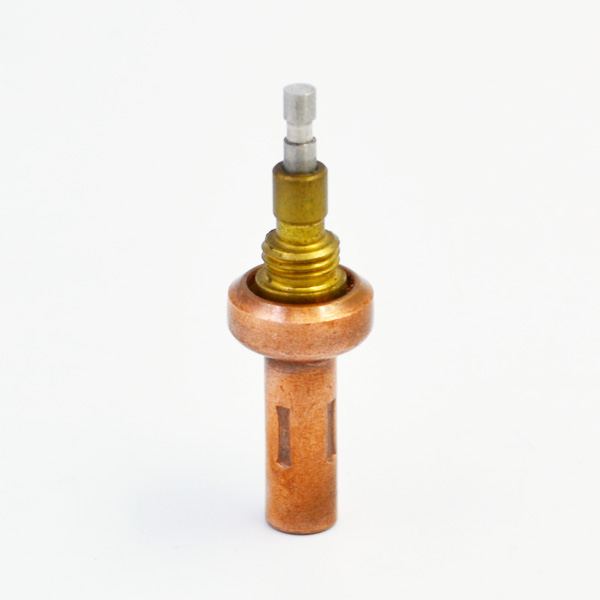At present, the elevator control mode is mainly divided into three kinds: relay control system, programmable logic controller (PLC) control system and microcomputer control system. Among them, the excellent performance of PLC control system makes the elevator system based on PLC control become economical, efficient and easy to maintain. Based on this, this paper briefly introduces the application of programmable controller in elevator equipment. The new Campus of Kangda College of Nanjing Medical University is located at the foot of Huaguo Mountain, Lianyungang Scenic Spot. It covers an area of 333 333 m2 and has more than 6,000 teachers and students. At present, there are 17 elevators in use in the school, which are distributed in various buildings on campus. Most elevators have been used for nearly five years. Because of the large flow of people and the high frequency of elevator use in schools, the daily maintenance task is still relatively heavy. According to different performance and function, thermostatic element the elevator structure is generally divided into the following eight systems. Traction system: output and transfer power to drive the direction of elevator operation. Guide system: The main restriction of the car’s freedom of movement, so that the car can only move up and down along the guide rail.

Car system: It is the main working part of the elevator and the main part of the elevator to transport the target object.
Door system: Passengers or cargo import and export, operation floor, sedan door must be closed, arrival can only open sedan door, floor door, door lock, door opener, door closing anti-clip device. Weight balance system: with the car, traction rope and other components of the traction, balance the weight of the car and compensate for the impact of the weight of the traction rope in the high-rise elevator on the weight, compensation chain (rope). Electric drive system: It is mainly composed of traction motor, lock and switch circuit and door opener. It controls the speed of each part of elevator by providing power. Electrical control system: It is the core of the elevator control system, which mainly controls and controls the operation of the elevator.

Safety protection system: first, the forced speed change switch, limit switch and limit switch are installed near the upper and lower terminal stations of the elevator to prevent the elevator from overtaking the journey; second, the speed limit system is installed in the elevator to stop the operation of the elevator when the elevator goes up and down over the speed; third, the alarm and rescue devices are installed to prevent the failure of the control personnel in case of accidents. Discover in time. PLC programmable controller is an industrial computer system with microprocessor as its core. Its hardware composition is similar to that of computer. According to the different structure forms, PLC can be divided into two types: integral type and combined type. Integral PLC. Integral PLC assembles central processing unit (CPU), memory, input and output unit, power supply, communication port and I/O extension port in a box to form a host computer.
In addition, there are independent I/O extension units to cooperate with the host. Integral PLC has compact structure and small volume, which is often used in small computers. The basic composition of integral PLC is shown in Figure 1. Combined PLC. Composite PLC makes CPU unit, input unit, output unit, intelligent I/O unit and communication unit into corresponding circuit board or module respectively, and the modules are connected with each other through the bus on the bottom board. Units with CPUs are called CPU modules, and other units are called extension modules.
The combined structure is often used in medium and large-scale computers. Because of the flexible configuration of the combined PLC system, some minicomputers also adopt this structure. The basic composition of the combined PLC is shown in Figure 2 [2]. Compared with the general relay control, the programmable controller has the following characteristics: high reliability, strong anti-interference ability, average fault interval of more than 5 years; complete supporting, perfect function, strong practicability; simple programming, easy to use; small size, light weight, low energy consumption; small workload of system design and construction, self-contained. Diagnostic function, easy maintenance, easy to transform [3]. With its good control performance, PLC can not only meet the needs of general industrial production, but also closely integrate communication and information technology to constantly improve its functions. In addition, PLC and DCS complement each other, and they will be integrated into one in the future. At present, the traditional relay control system can not fully meet the needs of modern industrial production. Although its fault detection is simple and convenient, it is extremely vulnerable to damage, and the elevator is used more frequently in daily life, which increases the failure rate of elevators and greatly reduces the reliability and safety of elevators. Therefore, it is imperative to update the traditional elevator relay control system. Programmable Logic Controller (PLC) has been gradually applied to industrial control such as elevators, which not only improves the corresponding functions, but also greatly improves the safety factor. The advantages of programmable controller applied in elevator control field are as follows: simplifying circuit design, removing most unnecessary relays and simplifying control system; adopting PLC automatic control in elevator control, the reliability is greatly improved; for complex control system, PLC can quickly increase or change corresponding functions; and having fault alarm. Display system, automatic detection of problems found, greatly improve the safety and protection performance of elevators; PLC changes the control scheme without changing the hardware wiring [4]. Microelectronic control technology is used in PLC. A large number of switching actions are accomplished by contactless semiconductor circuit, which has high reliability. In the elevator control system, PLC can coordinate with various logic switches to achieve the purpose of elevator lifting. In addition, PLC is equipped with self-inspection and monitoring functions, which can self-diagnose its own faults and display them to operators at any time, so as to solve sudden faults at the first time. In the process of PLC control circuit, when the main system acts, the control system (PLC) will enter a cycle mode, which is also a process of logical discrimination. According to the call button or other input signals outside the elevator door system, the elevator output signals such as lifting, landing and stopping will be executed. In the daily operation of elevators, we will encounter some urgent problems that need to be solved. Now we briefly analyze and deal with several common failures of elevators. Fault phenomenon: elevator can not run after closing the door. Fault analysis: Manual/automatic switch failure, that is, switch damage or disconnection of the corresponding line. Fault phenomenon: the elevator can not close normally. Fault analysis: The shutter relay is damaged or the circuit corresponding to the shutter output (corresponding coil) is disconnected.

Fault phenomenon: elevator can not open normally. Fault analysis: The open door relay is damaged or the line corresponding to the open door output (corresponding coil) is disconnected. Fault phenomenon: After the elevator car door closes and clamps, the door can not open automatically. Fault analysis: Elevator safety contact plate protection failure, contact switch failure or the corresponding connection line disconnection phenomenon [5]. Failure analysis: After the elevator car door is opened, it can’t close automatically. Fault analysis: Shut-off limit switch short connection. This paper analyses the composition and working characteristics of PLC, the application of PLC in elevators and common failures of elevators. The analysis shows that PLC is suitable for elevator field. However, it should be noted that there are some inevitable defects in PLC, which requires technical personnel to constantly innovate and develop new products.
